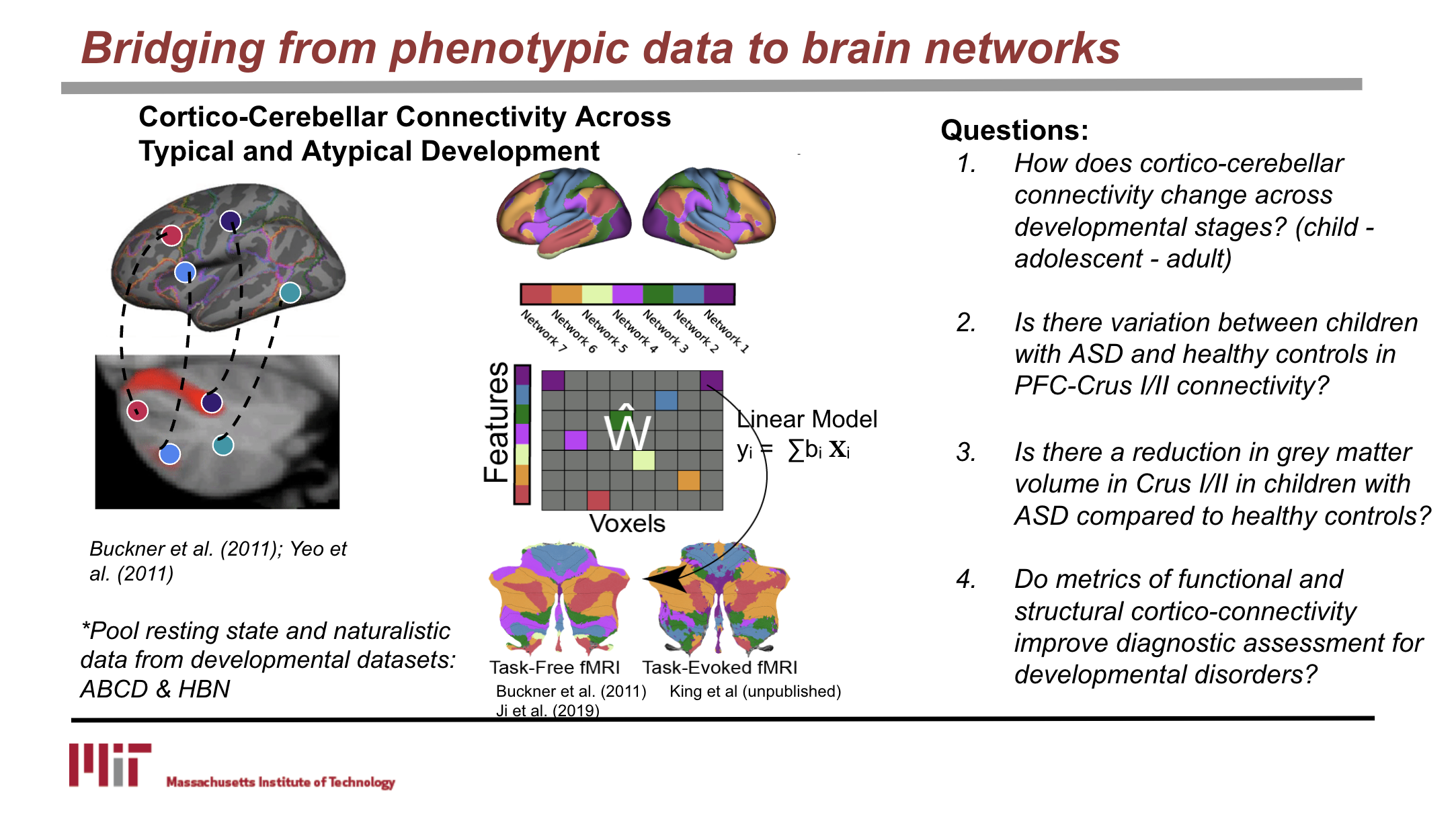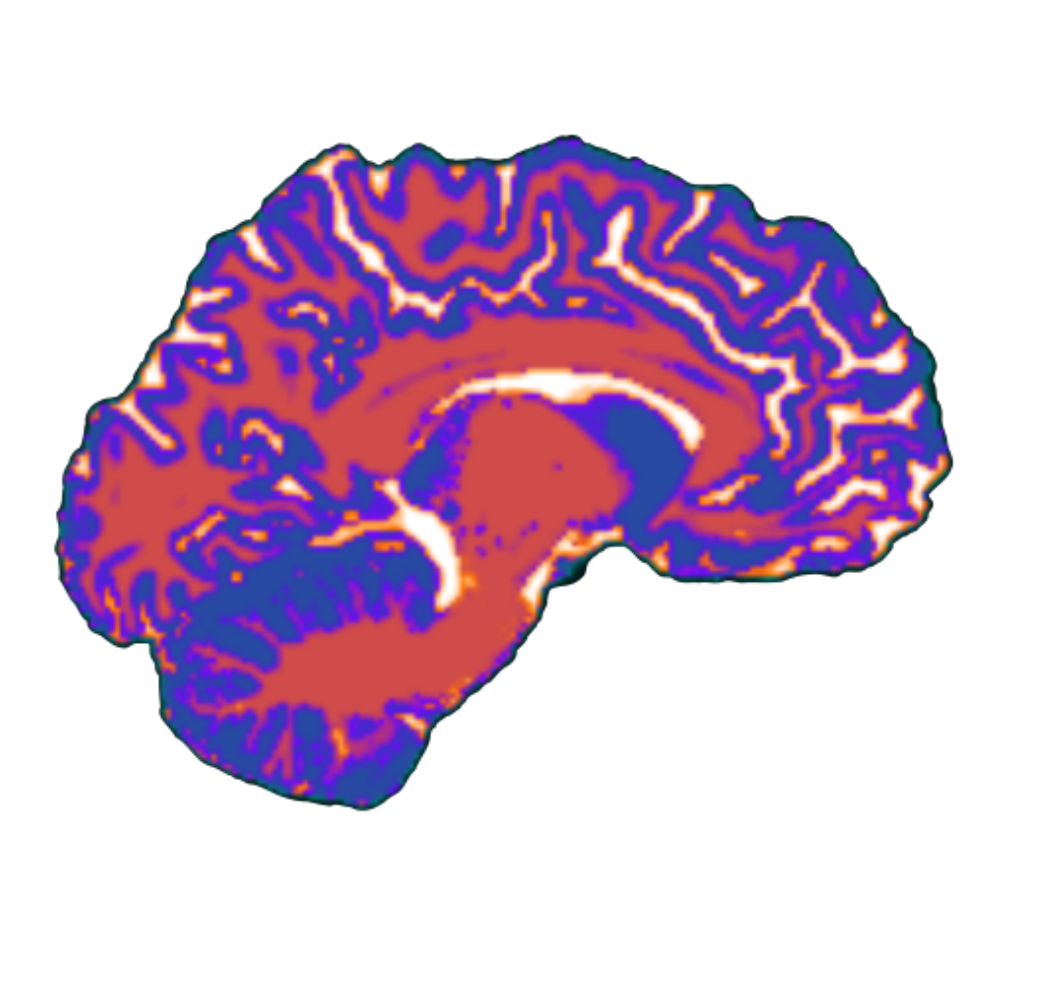Cerebellar fingerprints of neurodevelopmental disorders
Introduction
There has been great interest recently in the idea of the cerebellum as a locus in neurodevelopmental disorders. Structural and functional abnormalities in the cerebellum are consistently reported across neurodevelopmental disorders, and in particular, autism spectrum disorder (ASD) has been linked to cerebellar abnormality. For example, children and adults with ASD show atypical fMRI activation of cortico-cerebellar networks during biological motion perception Jack et al. 2017 and perception of social interaction Kana et al. 2015. Furthermore, behavioral studies have found that children with ASD display abnormal conditioned reponses in delayed eyeblink conditioning, a conditioning paradigm that strongly implicates the cerebellum. For example, Tran et al. 2017 tested delayed eyeblink conditioning, a task which is depenedent on the cerebellum, on a group of very preterm children and adults. They found that in this group, there were significant deficits in the acquisition of conditioned responses, therefore suggesting that both motor and non-motor behavioral deficits arise from cerebellar abnormalities.
One of the primary reasons why we think of the cerebellum as being an important developmental structure is that it is among the first brain structures to begin cellular differentiation and one of the last to fully mature Sathyanesan et al. 2019. Specifically, while the majority of neocortical neurogenesis occurs prenatally Silbereis et al. 2016, cerebellar neurogenesis continues until the 11th postnatal month Abraham et al. 2001. During this period, the cerebellum undergoes enormous growth, quadrupling in volume between the 24th and 38th gestational weeks Volpe et al. 2009, and then it doubles in size during the first 90 postnatal days. In fact, 85% of granule cells, the most populous cell type in the cerebellum, are generated after birth Kiessling et al. 2013. Given its protracted development, the cerebellum is especially vulnerable to a host of insults from environmental and molecular, to genetic and epigenetic factors Sathyanesan et al. 2019. Studies of preterm infants have shown that cerebellar injury during the perinatal period results in volume reduction in both cerebellar grey and white matter as well as remote neocortical regions Limperopoulos et al. (2014). These results suggest that changes in early cerebellar activity affect both cerebellar development and activity of neocortex, which means that the cerebellum could play an important role in refining cortical circuits during critical develpmental periods Wang et al. 2014.

Notes
another important consideration in the healthy brains network: preterm birth
behavioral/cognitive tasks that measure: eye blink reflexes, sensory/tactile processing, timing, sensory integration, fine motor coordination,
PROTRACTED DEVELOPMENT OF CEREBELLUM: prenatal information in the database (and early infancy) - could there be specific events (environmental, molecular etc) that resulted in disruption of cerebellar circuitry? and could disruption of the circuit at different timepoints result in different clinical outcomes? either severity of disorder or different presentation of disorder?
complex brain disorders with a cerebellar locus follow different developmental trajectories.
it has been suggested that the language and social deficits observed in children with complex disorders are a consequence of deficits in multi-sensory integration.
one particular process that could be implicated in multisensory integration in children with ASD is timing. For example, this process may be impacted by a deficit in perceiving the temporal relationship between distinct sensory components of complex audio-visual stimuli such as language, and this deficit could also compound in social cognitive processes like theory of mind Stevenensen et al. 2014
what is the impact of environmental factors (e.g., parental behaviors, trauma, substance abuse etc.) on diagnosis of neurodevelopmental disorders?
cognitive profiles are related to children’s learning ability Hulme & Snowling, 2009 - so a good test of whether a network can reliably represent individual differences in cognition is to test whether it will generalize to unseen data and predict children’s learning scores.
ages 7-11 is the peak age at which developmental disorders and cooccuring learning difficulties are first identified.
possible methods:
- articicial neural network Siugzdaite et al. (2020 and summarized here
- partial least squares Dong et al. 2022
- important methodological considerations are covered in this recent paper by Dhamala et al. 2022
questions with behavioral dataset:
- within each assessment, and each domain, which measures are most successful in classifying disorders / predicting general cognitive functioning?
- across all domains (language versus physiological status etc.), which are most successful at classifying disorders / predicting general cognitive functioning?
- which are more reliable: parent or child measures at classifying disorders / predicting general cognitive functioning?
- what are the features that best classify sex?
